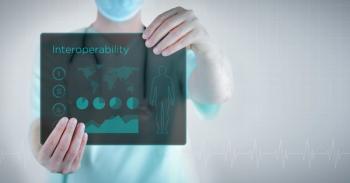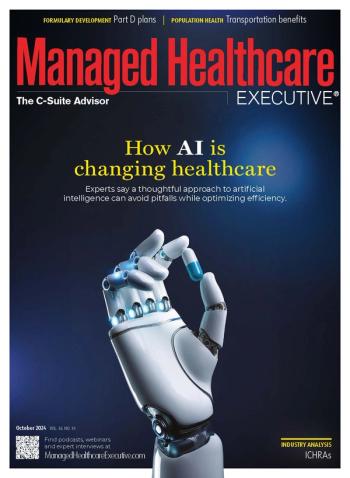
Healthcare’s Digital Transformation Improves Lives, Not Just Efficiencies
COVID-19 sped up healthcare’s digital transformation. The 20-minute telehealth visit can mean less unpaid time off from work and the difference between seeking care and putting food on the table. Care-at-home programs can reduce the risks associated with hospitalization, such as hospital-acquired infections.
Technology is advancing within every sector of the economy, making businesses and services more consumer-friendly efficient and available. Nowhere is this transformation more apparent than in healthcare.
Kicked into hyperdrive by the COVID-19 pandemic, the transformation means that more physicians and clinicians than ever are using technology to better meet the needs of patients in ways that improve outcomes, equity, access, efficiency and affordability. Technology, such as telehealth, enables healthcare organizations to tailor care to the specific needs of individual patients, creating a personalized experience that results in better health for individuals and populations. Tailored experiences are something
What may separate innovation in the healthcare sector from other areas of the economy is the motivation to improve lives, not just efficiencies.
During the pandemic, health systems’ ability to rapidly scale telehealth services enabled patients to continue receiving care while keeping them safe and minimizing exposure to COVID-19. At Kaiser Permanente,
The raw numbers do not tell the full story. Telehealth and other technological innovations allow health systems to extend clinician visits and services rapidly and seamlessly to more communities. These innovations reduce the amount of unpaid time people take off from work to see the doctor, a change which could mean the difference between choosing whether to get needed care or putting food on the table. When you factor in driving, parking and waiting room time, a 20-minute, in-person appointment can mean a two-hour time commitment. By eliminating that physical journey, telehealth gives a patient back at least an hour and 40 minutes of their day.
Telehealth is also expanding access to vulnerable populations. In
The innovation conversation does not begin and end with telehealth. For decades, systems have used electronic medical records to improve care coordination across disparate clinicians, enabling them to identify and fill gaps in care more easily than in the days of paper records within systems and often across town.
Today, healthcare systems use technology to bring clinical services into the homes of patients that just a few years ago we would have thought impossible.
For example, Permanente physicians and cliniciansin Northern California, Southern California, Oregon, and parts of Washington provide hospital-level care in the homes of thousands of patients. This is possible through a mix of telehealth, e-consults, remote monitoring and in-person visits. This hybrid approach of technology and in-person visits makes care and care transitions more seamless. It also gives care teams the ability to deliver services conveniently and get a firsthand look at the patient’s living environment, an important factor that contributes to a person’s ability to get and stay healthy.
The care-at-home program benefits patients living with serious conditions such as diabetes, hypertension, pneumonia, and even cancer. It is a model that is rapidly expanding. In 2021, Kaiser Permanente’s Southern California Care at Home program had nearly 10,000 patient interactions. Since January 2020, the Advanced Medical Care at Home program in Southern California, which treats patients with more serious conditions, has treated more than 3,950 patients. Other health systems, such as Mayo Clinic and Cleveland Clinic, developed their own models. People across the country are benefiting from this level of in-home care.
The results go beyond convenience. For example, patients treated with hospital-level care in their home in the Southern California program spend, on average, 2.2 fewer days needing care than those in in-patient settings. These patients are also less likely to get a hospital-acquired infection and are more likely to stay healthy, with readmissions for in-home patients about half the rate of readmissions of those in in-patient settings.
By 2050, healthcare will look vastly different. While illness and disease will never be eradicated completely, a digital-first approach will make it even easier for healthcare in the future to increase focus on staying healthy, coordinate care across diverse care teams and geographies, and deliver all levels of services in ways and settings that meet the needs and preferences of patients. A commitment to the continued pursuit of technological innovations that improve the lives of patients and deliver care in ways that meet their needs must be a priority for health systems.
Ramin Davidoff, M.D., is executive medical director and chair of the board, Southern California Permanente Medical Group; chair of the board and CEO, The Southeast Permanente Medical Group; chair of the board and CEO, Hawaii Permanente Medical Group; and co-CEO, The Permanente Federation.
Newsletter
Get the latest industry news, event updates, and more from Managed healthcare Executive.

















































